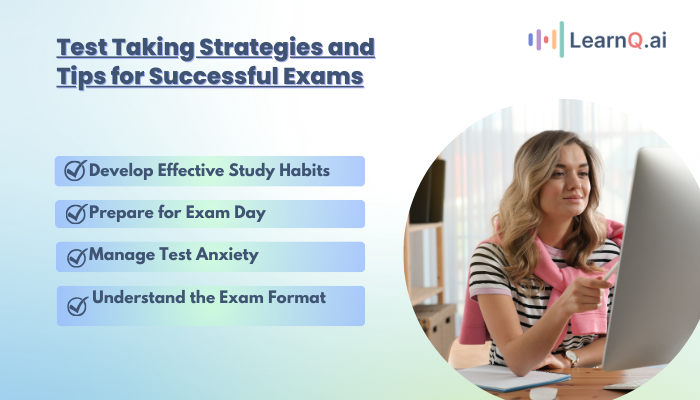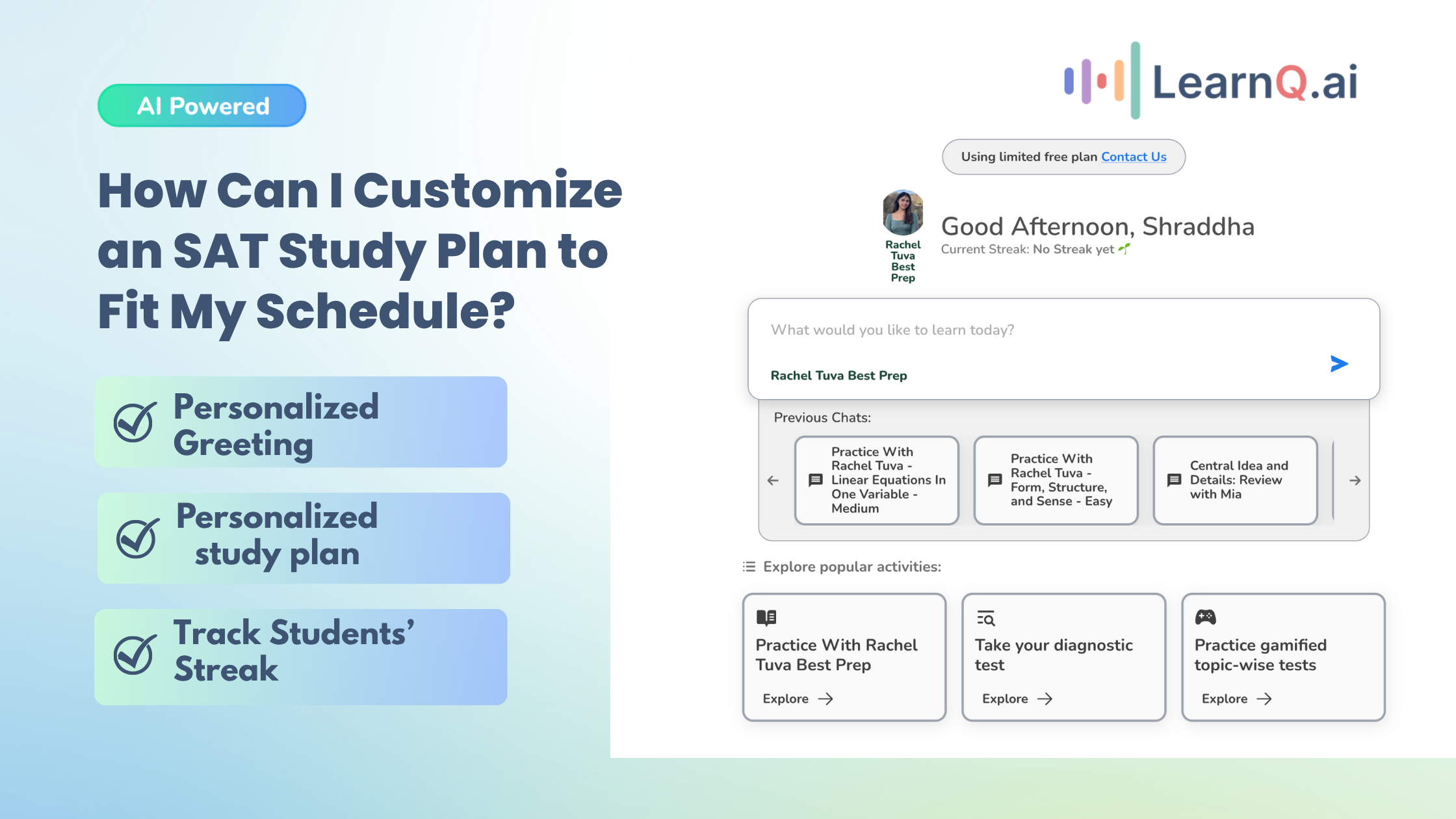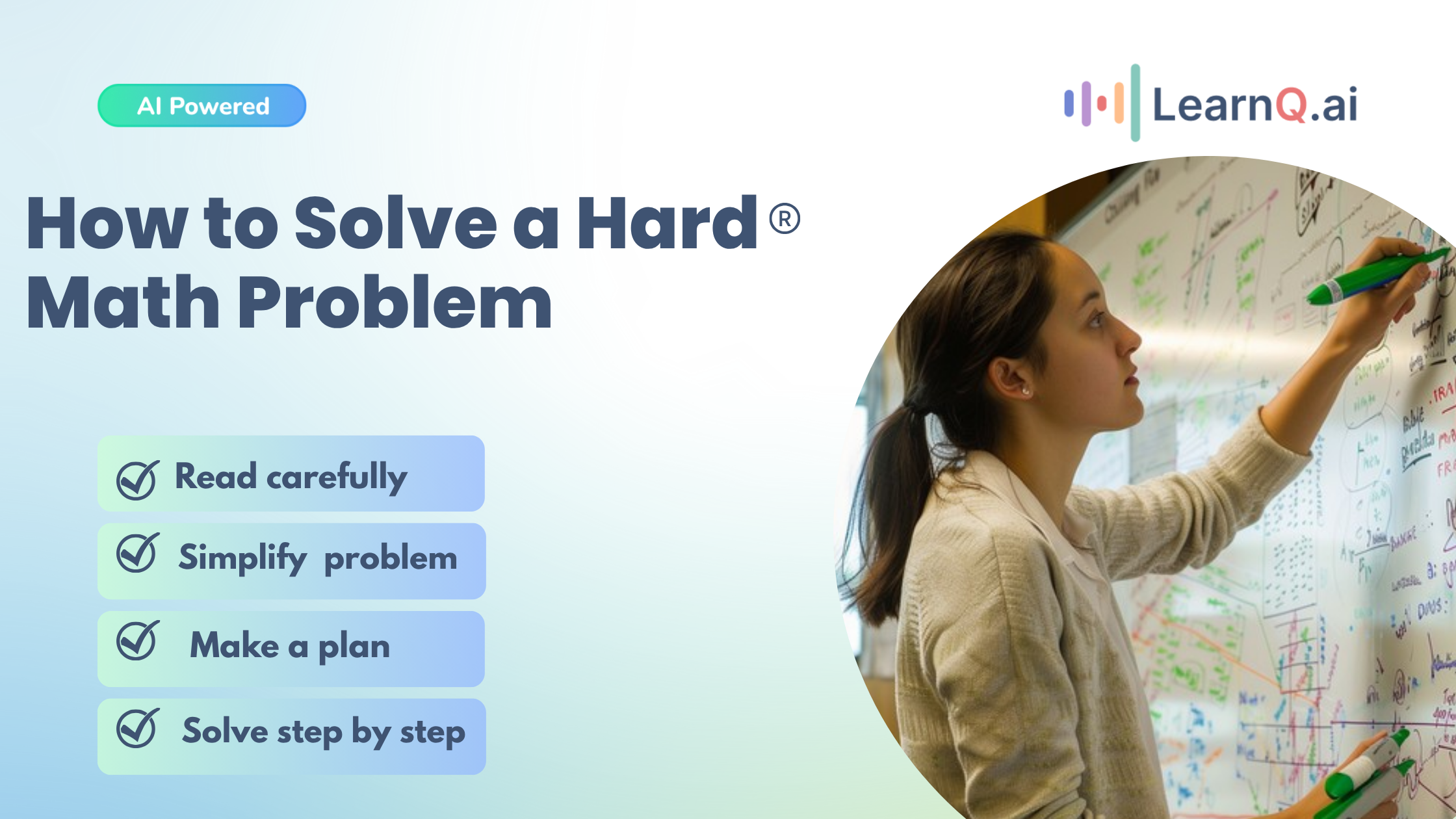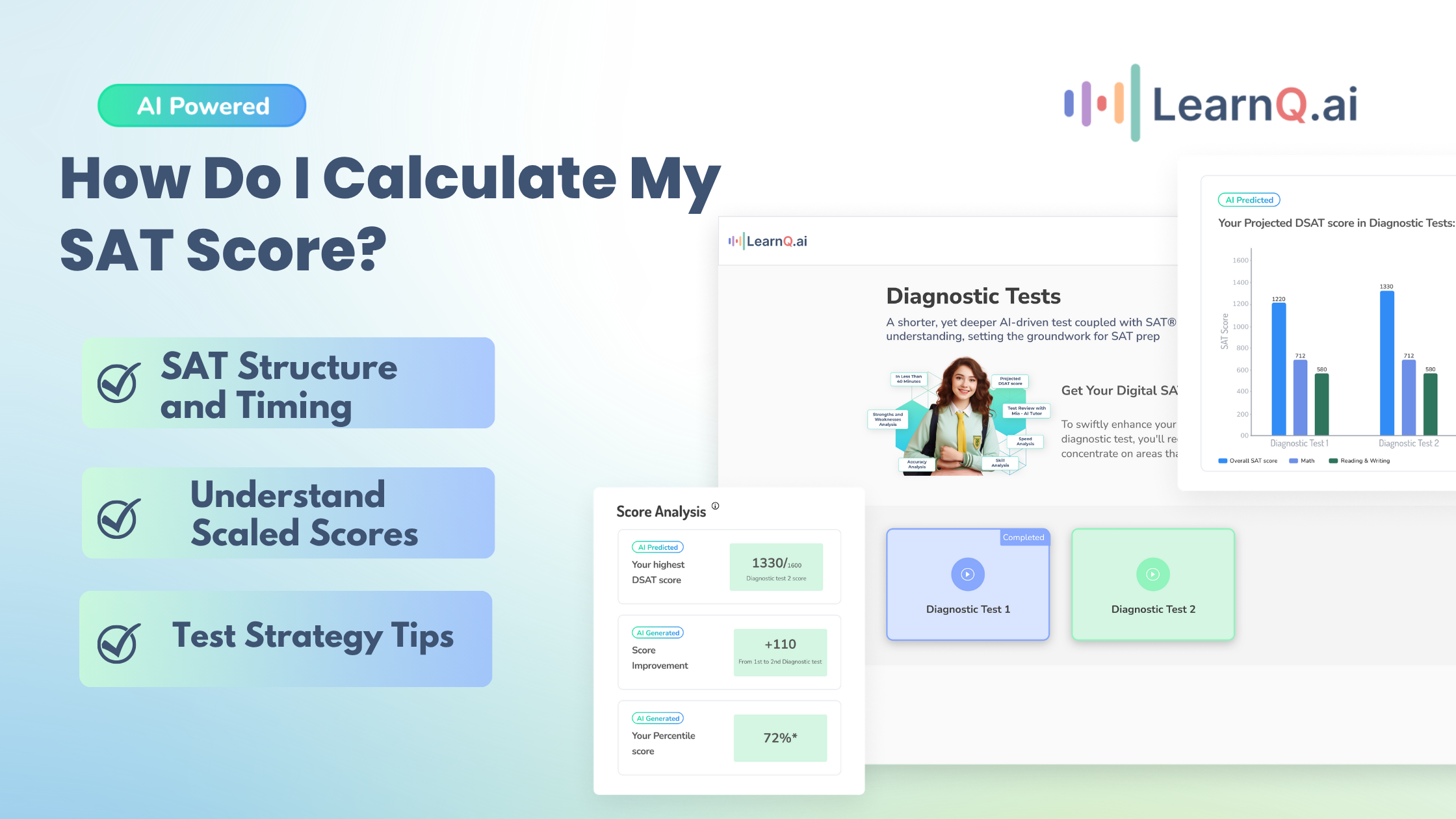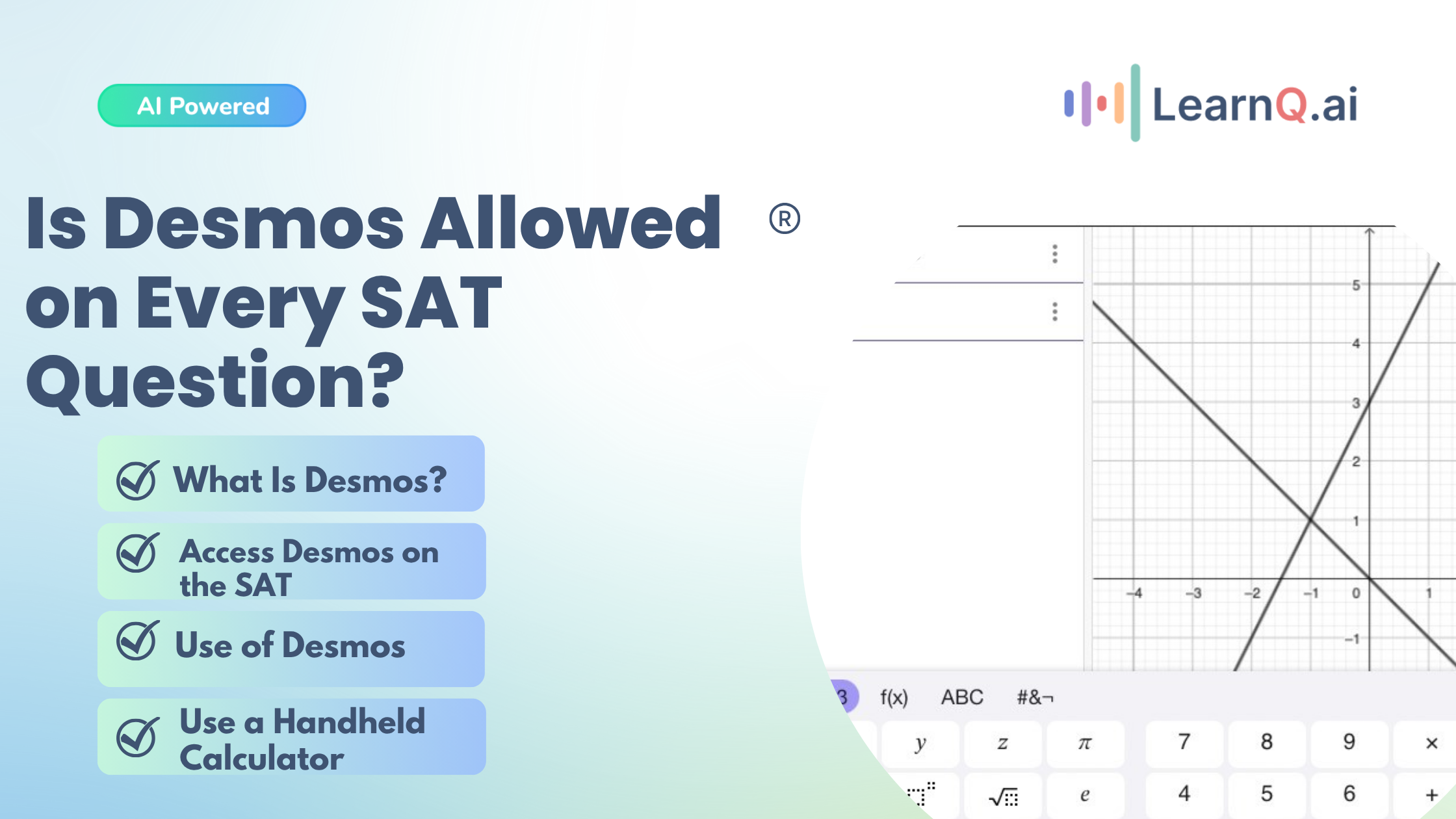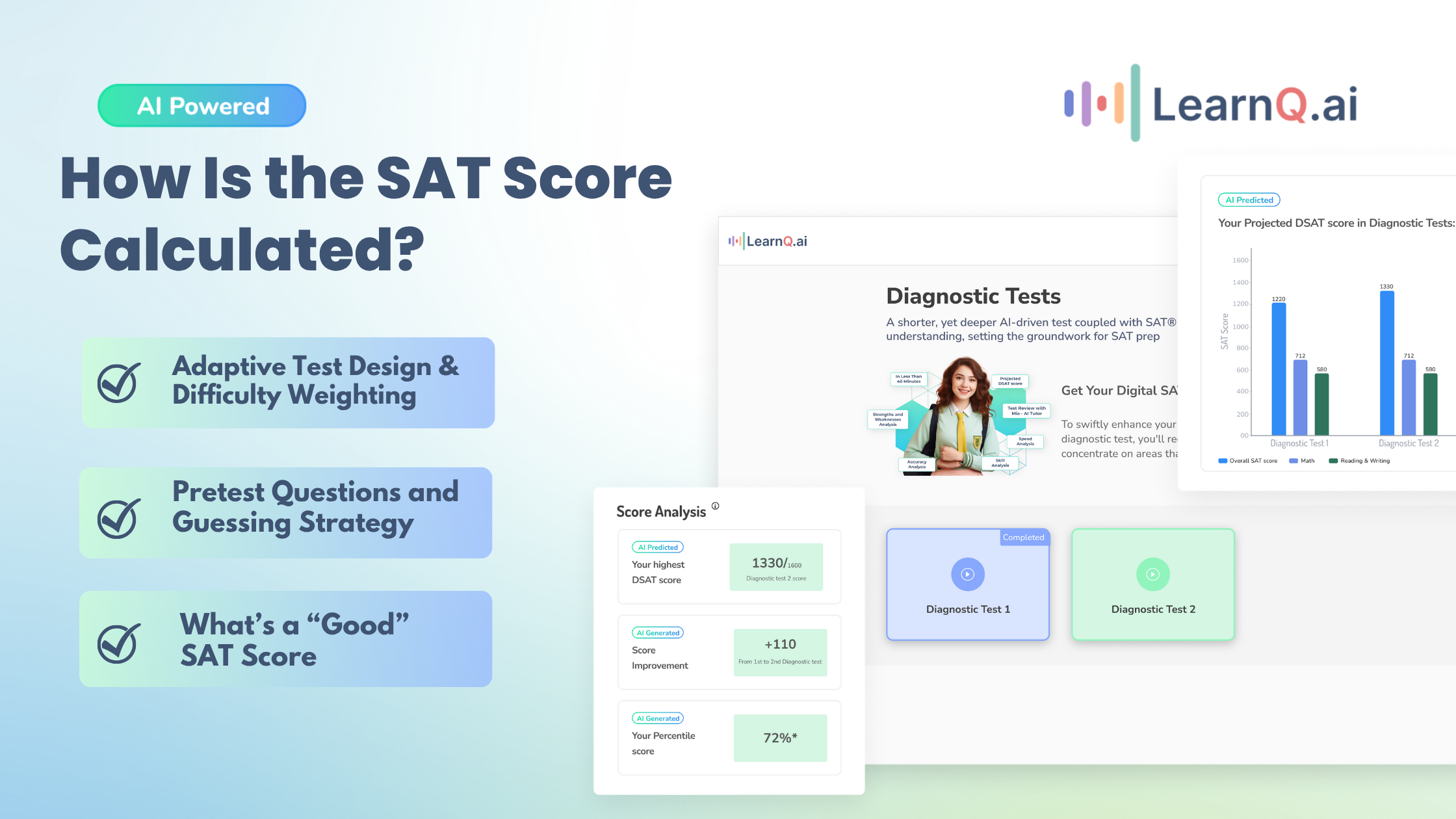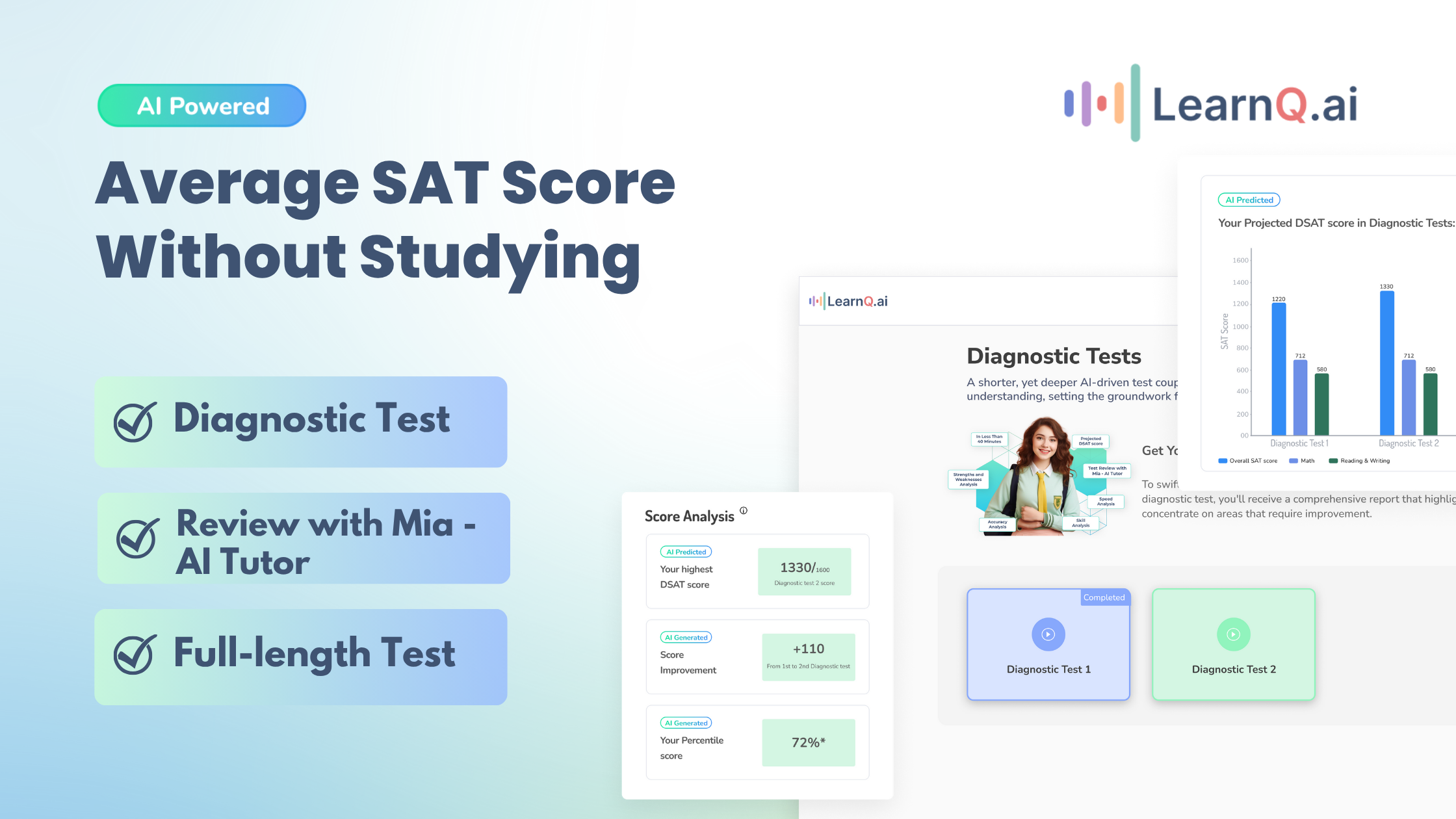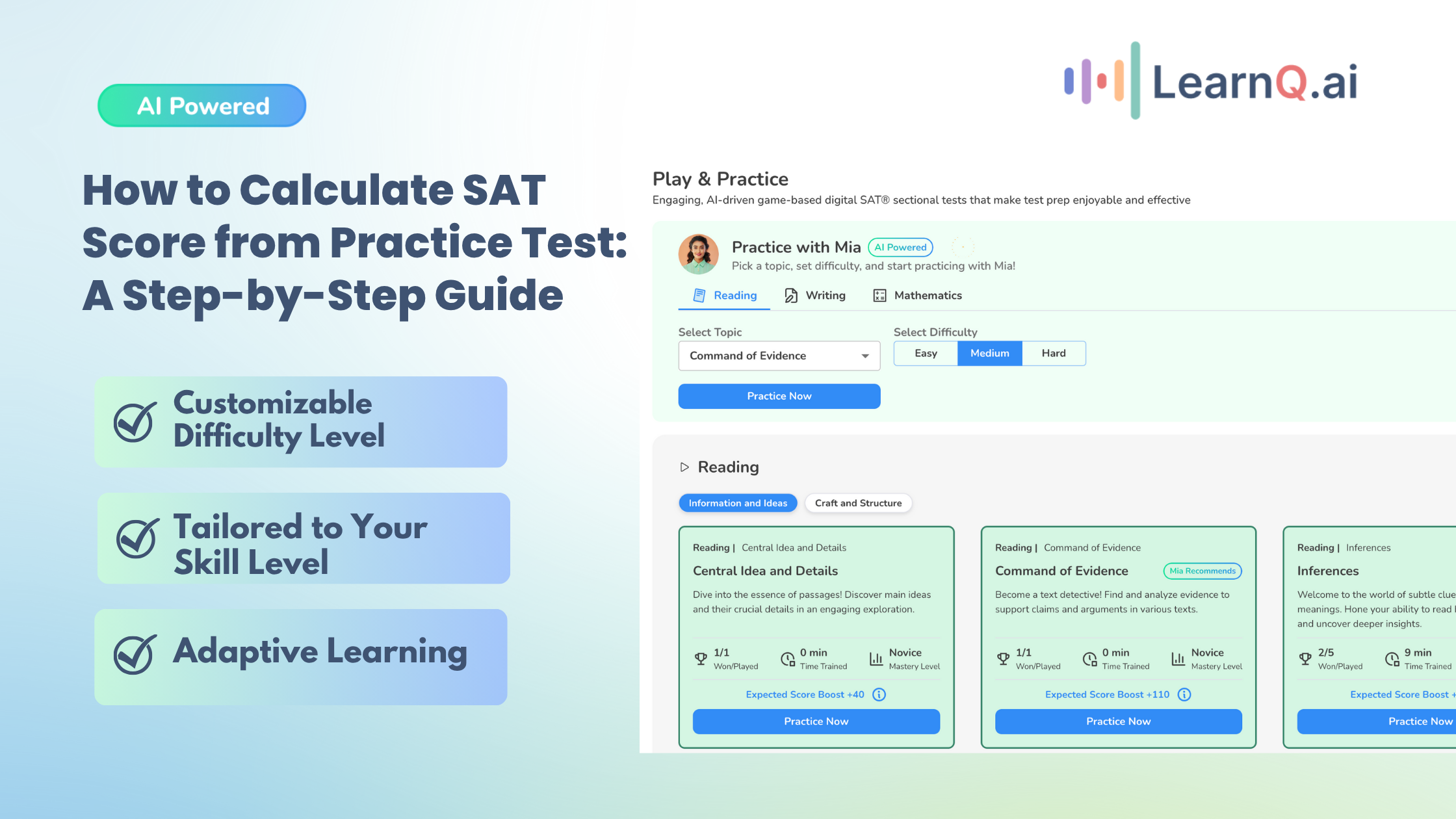Having good test-taking strategies is important for doing well in exams. Whether you are a student taking a test or a teacher helping students prepare, these strategies can make a big difference.
Knowing how to prepare and take the test can make you feel more confident and reduce stress.
In this guide, we will look at three key areas to help you succeed: what you can do before the test, how to approach the test on the day, and why it’s helpful to think about your performance after the test. These strategies can improve your test results and help your students do the same.
LearnQ.ai is Powered by VEGA AI—Is your Institute Next?
Give students a Duolingo-style test-prep platform with Shopify-level customization for tutors and institutes.
Let’s get started!
Pre-Test Preparation
Adequate pre-test preparation is crucial for success in exams. Here are key strategies to enhance your study routine.
Active Learning Methods
Use active learning techniques like summarization and self-testing to prepare for your exam.
- Summarization: Break down what you learn into short notes. This helps you remember the important points better.
- Self-Testing: Quiz yourself on the material regularly. You can use tools like LearnQ, which provides a free diagnostic test, to see what you know and need to work on and create a study plan focusing on your strengths and weaknesses.
Familiarity with Test Format
Knowing the test format is most important for doing well. Here are some tips:
- Understand Question Types: Learn about the types of questions you will face, like multiple-choice or short answers. Each type may require a different approach.
- Practice with Sample Questions: Use LearnQ to find sample questions and practice tests. With over 5,000 practice questions similar to the SAT exam, practicing with these will help you feel more prepared.
- Review the Test Structure: Understand how the exam is organized, including sections and time limits. For example, the SAT has three main sections: Reading, Writing and Language, and Math, each with a specific time limit. Knowing this will help you plan your strategy, such as how much time to spend on each section and when to move on.
Enhance your Digital SAT study routine with AI-driven insights and personalized practice tests.
Get Adequate Sleep
A well-rested mind performs better. Aim for 7-8 hours of sleep the night before the exam. Cramming late at night can lead to exhaustion and make recalling information during the test harder.
Prepare Your Materials in Advance
Ensure you have all the necessary materials, such as pens, pencils, erasers, calculators (if allowed), ID, and other required documents. This prevents last-minute stress.
Prepare comfortable clothing that suits the exam environment (e.g., layers for varying temperatures). Avoid anything that might distract you or others.
Know the Exam Rules and Regulations
Be aware of the rules regarding items you can bring, time limits, and what constitutes misconduct. Breaking the rules, even accidentally, can lead to disqualification.
In case of unforeseen circumstances, have the contact information of the test center or proctor handy.
Time Management
Next, managing your time is key as you approach your exam. Here’s how to do it:
- Create a Study Schedule: Plan your study time in advance. Break your study material into smaller sections and set specific times to study each. This will make studying less overwhelming and more organized.
- Set Goals: Aim to reach certain milestones, like completing a set number of weekly practice questions. This keeps you motivated and on track.
You can use LearnQ to create a study schedule and set specific goals to simplify this.
Also, LearnQ’s analytics dashboard will help you track your progress, showing you which areas you excel in and where you need more practice.
This way, you can adjust your study plan to stay on track and meet your goals.
After pre-test preparation, setting up your test day strategies is crucial. Let’s move on to that.
Also read: How to Get a Customized 12-Week SAT Study Plan with LearnQ.ai
Test Day Strategies
A solid strategy is essential to perform at your best on the exam day. Here are some key approaches to ensure you navigate the test efficiently and effectively.
Eat a Balanced Meal
Eating a balanced meal before the exam fuels your brain. Foods rich in protein, complex carbs, and healthy fats (like eggs, whole grains, and nuts) can sustain your energy levels and keep you focused.
Mindset and Relaxation Techniques
If you start feeling anxious during the exam, take a few deep breaths to calm your nerves. Simple breathing exercises can help you relax and refocus.
Boost your confidence with affirmations. Remind yourself that you are prepared and capable of handling the exam.
Plan for Potential Disruptions
Plan your route to the test center and consider factors like traffic or public transport delays. Arrive early to avoid rushing.
If something fails during the test, bring extra pens, pencils, batteries (for calculators), and other essentials.
Maintain Focus and Avoid Distractions
During the exam, try to focus on your own test, ignoring distractions from others. This will help keep you centered and reduce anxiety.
If you’re sensitive to noise, earplugs can help you concentrate better.
Enhance your Digital SAT study routine with AI-driven insights and personalized practice tests.
Read Instructions Carefully
Understanding the directions before starting your exam is crucial. Take a moment to read the instructions for each section thoroughly.
This helps you avoid unnecessary mistakes and ensures you know what is expected. Here are some additional tips:
- Clarify Doubts: Don’t hesitate to ask the proctor for clarification if something is unclear.
- Prioritize Sections: Based on your confidence levels, decide which sections to tackle first. If you feel more confident in a particular subject, start there to build momentum. This can also help reduce anxiety as you accumulate points early on.
Time Allocation
Effective pacing is essential during the exam. Develop a strategy for managing your time, allocating specific minutes for each section based on its length and your confidence. Here are some strategies:
- Set Time Limits: If you have 60 minutes for a section with 30 questions, aim to spend about 2 minutes per question.
- Use LearnQ: Use LearnQ time management techniques to improve your exam preparation. Seek advice from Mia, LearnQ’s AI tutor, to help you plan your time. This will help you navigate the test efficiently and maintain a steady pace, reducing stress during the exam.
Answering Questions
Start by answering the easier questions first. This approach helps build confidence and ensures you secure those points early on. Here’s how to approach answering questions:
- Skip Difficult Questions: If you encounter questions that are too challenging, skip them and return to them later if time permits.
- Stay Calm. Remember, it’s okay not to know every answer right away. Staying calm will help you think clearly.
Elimination Techniques
For multiple-choice questions, use the process of elimination to improve your chances of selecting the correct answer. Consider these techniques:
- Cross Out Wrong Answers: Start by eliminating options you know are incorrect. This narrows your choices and increases the probability of selecting the right one.
- Practice on LearnQ: Use exercises on LearnQ to practice these elimination strategies. The more familiar you become with this technique, the more effective you will be during the test.
Review Answers
Finally, allocate time to review your marked questions at the end of the exam. This final check can help catch mistakes or allow you to reconsider your answers. Here are some tips for this stage:
- Use a Checklist: Create a simple checklist of questions you want to revisit.
- Simulate Real Conditions: LearnQ’s practice tests simulate real exam conditions, making it easier to develop effective review habits before test day.
Finally, post-test reflection is the last step in assessing your performance and planning for future improvement.
Also read: Strategic Steps, Tips, & Templates For Effective Lesson Planning
Post-Test Reflection
After completing your exam, it’s essential to take time for reflection to enhance your future performance. Here’s how you can effectively analyze your results:
Analyze Performance
Start by reviewing your overall performance. Reflect on what worked well during the test and what didn’t. Ask yourself questions like:
- Which strategies helped you answer questions quickly and accurately?
- Were there any particular sections that you found more challenging?
You can get help from LearnQ for this. With the help of Mia, LearnQ’s AI tutor, you can analyze each question to understand your mistakes.
This feedback helps you identify specific areas for improvement based on your test results.
By looking at the questions you struggled with, Mia can direct you to similar practice questions, ensuring you master those concepts and clear any doubts. This focused approach allows you to adjust your study plan for future exams effectively.
LearnQ.ai is powered by VEGA AI—Is your institute next?
Offer students a Duolingo-style test-prep platform with Shopify-level customization for tutors and institutes.






Conclusion
Effective test-taking strategies are crucial for your success and managing exam anxiety. Key strategies include reading instructions carefully, working time, answering questions strategically, using elimination techniques, and reviewing answers.
LearnQ offers valuable resources for students and educators. The platform includes tools tailored to different learning styles, Mia, an AI tutor for 24/7 support, and a data-driven approach to help you master concepts.
You also gain access to an SAT student group on Discord for collaboration and sharing tips with peers. Plus, LearnQ provides Gamified Digital SAT Prep to make studying more engaging and effective.
Start your exam preparation with LearnQ and see how it can improve your study process.

